Buttercup creeping: description and cultivation
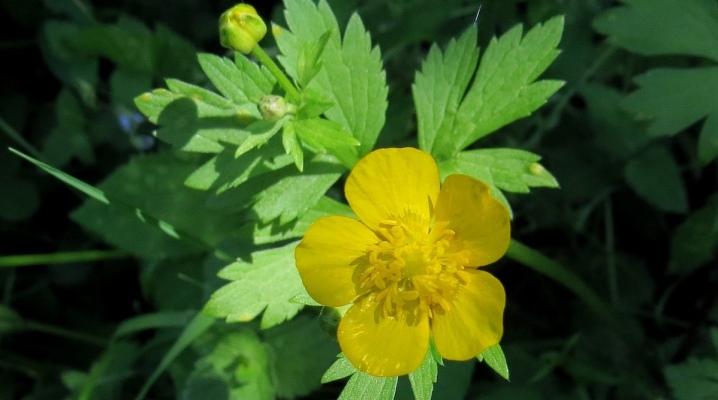
The creeping buttercup is a bright and beautiful, but at the same time quite dangerous plant. It is known that in ancient times, the buttercup was used by people for selfish purposes, only a small amount of this flower was enough to deprive a person of life. But there is also information that this plant has many medicinal properties.
Next, we will get acquainted with this plant in more detail, we will find out its description and the subtleties of planting, the main points of care, and also consider how gardeners use this flower in the creation of landscape design.

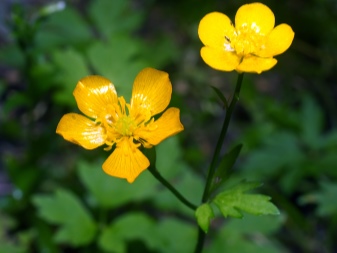
Peculiarities
Buttercup creeping or, as it is also called, Ranunculus repens is a plant from the Buttercup family... It grows mainly in humid areas, prefers shaded areas. It is often found on the banks of rivers and lakes, in meadows and forest swamps. The creeping buttercup belongs to perennial herbaceous plants, its average height is 15-35 cm. The stem has a slight pubescence, it can be ascending, but most often it is creeping. The flowers are correct, have a bright yellow color of the petals. The leaves are green with pronounced denticles.
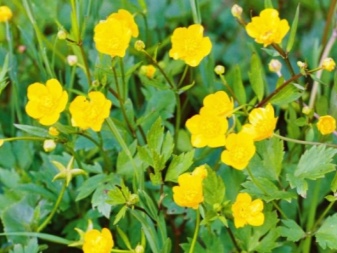

Buttercups begin to bloom in early summer. It is believed that the name of the flower comes from the word "fierce" because of its toxicity... Nevertheless, special non-toxic compounds were also found in the chemical composition of buttercup. The alkaloids present in this plant can positively affect the central nervous system, muscles and blood vessels of a person. They can also normalize human body temperature and blood pressure.
Also, this plant is rich in various vitamins. It should be understood that the collection of creeping buttercup for medicinal purposes should be extremely careful, since it contains a substance called protoanemonin, which is precisely the poison. Although its content in this plant is small, you should be very careful.
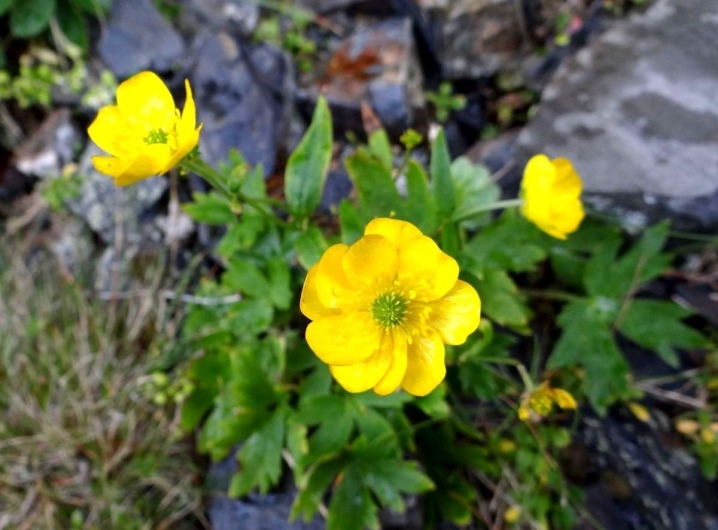
How to plant?
The creeping buttercup is usually grown from seed. They are sown in pre-prepared seedling boxes. The optimal time is the end of winter. To properly plant a plant, you should follow some recommendations.
- It is best to sow seeds in small grooves to a depth of about 2 cm.
- It is very important to observe the temperature regime, which should be about + 10 +15 degrees.
- It is best to cover boxes with future seedlings with foil to create a greenhouse effect. This will speed up the process of tuber formation.
- After a few weeks, the boxes with seeds should be moved to a warmer room, where the temperature will be about +20 degrees.
- After the tubers have formed, they should be placed in cool water for about 10 hours, and then in the prepared soil (for this, small pits should be made). The tubers should be deepened by 5-7 cm with the roots down.
- After this, the holes should be sprinkled with earth and watered future young plants.
If everything is done correctly, then the first shoots will be visible very soon. Usually this process takes no more than 14 days, but flowers may appear after 2-3 months.
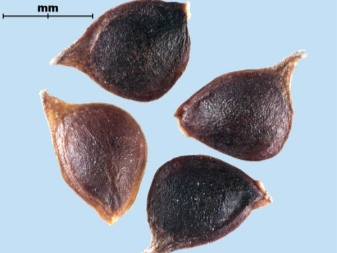

Application in medicine
The creeping buttercup is believed to be used in folk medicine. Various herbal decoctions and infusions are often made from it. The stem of the buttercup has medicinal properties that can help in resolving abscesses. The plant is also often used to treat rheumatism and scabies. It is very important to note that you should not self-medicate using a flower.
Long-term use is also undesirable when applying the plant to the skin, since it can cause burns and allergies.


How to take care of it properly?
The creeping buttercup is very easy to care for, so even novice gardeners can grow it. The main thing in this case is to follow just a few recommendations, as well as to properly water and, if necessary, fertilize the plant.
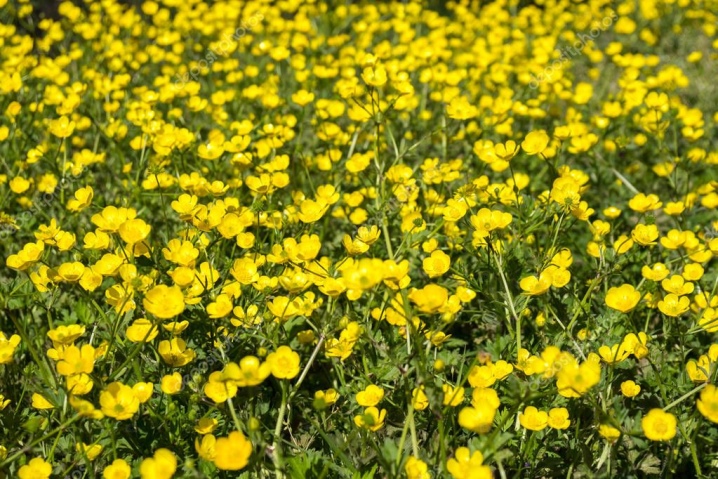
Watering and feeding
The creeping buttercup loves regular and at the same time intensive watering. However, it is not worth pouring the plant, as this can lead to decay of the roots. If the buttercup was abundantly flooded with water, then it must be dug up as soon as possible., after which the roots should be treated with a weak solution of potassium permanganate, and after processing it is important to dry them for several hours. It is important to remember that buttercups practically do not tolerate drought, since their roots dry out from dry weather and subsequently die off.
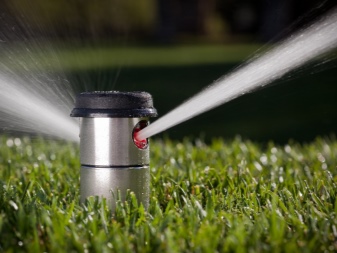
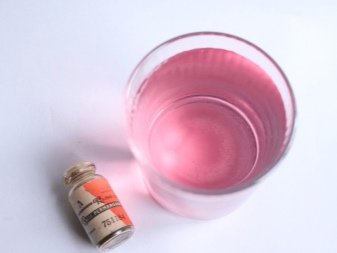
When buttercups are young and just forming, they need feeding. Fertilizers with the addition of nitrogen are excellent during the growth process. You can also use complex fertilizers, which can be applied every 2-3 weeks after planting. Thanks to fertilization, buttercups will bloom profusely and grow greenery, and will also be healthy throughout the season.

Pruning
Pruning is recommended for buttercups immediately after flowering. After the plant has completely faded, it must be cut almost to the root. During the flowering period, it is also recommended to remove faded flower stalks, since if this is not done, new buds will not open. After pruning the plants, it is important to properly prepare them for winter. There is no need to dig them out.
It is best to cover buttercups with spruce branches or dry foliage.
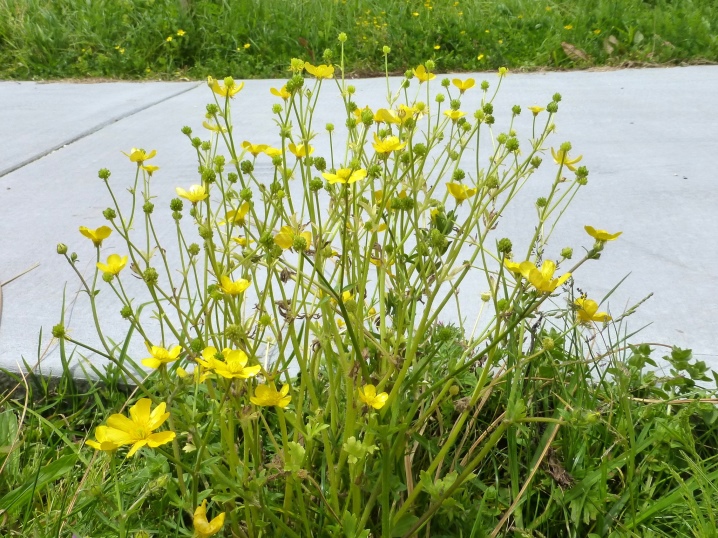
Reproduction methods
The creeping buttercup is propagated using seeds or tubers. The first method is quite painstaking, but seed germination, despite this, is usually high. If seedlings from seeds were grown at home in the usual way, then they can be planted in open ground and separated in spring.
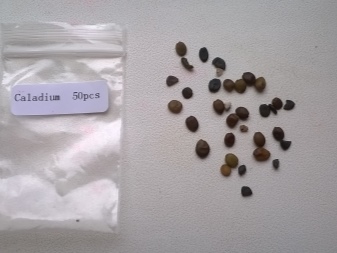
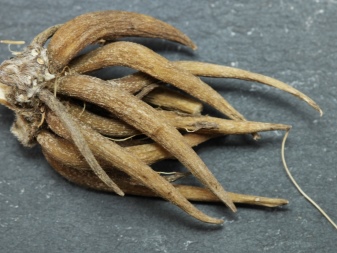
Reproduction by tubers and division of the rhizome is considered an easier way. Tubers separated from the mother plant should be soaked in water and dried before planting, and then they should be planted in shallow pits. Special care for young plants is not required in the future, since these flowers grow very quickly. If the creeping buttercup is planted in the garden, then it is not necessary to specially propagate it, since it does it perfectly on its own, growing over the free area without any problems and additional fertilizing.
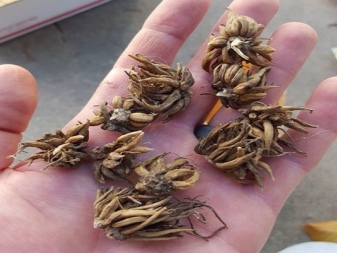
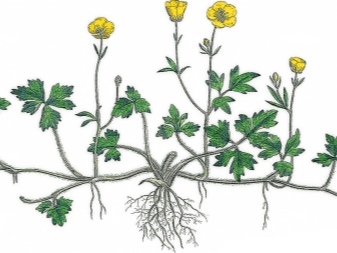
Diseases and pests
Buttercup creeping is considered a plant resistant to various diseases and pests. In this case, the plant should not be poured, since with excessive moisture, the roots and the flower itself can infect such a fungal disease as powdery mildew... Fungicidal agents, which can be purchased at any gardening store, can help get rid of it.
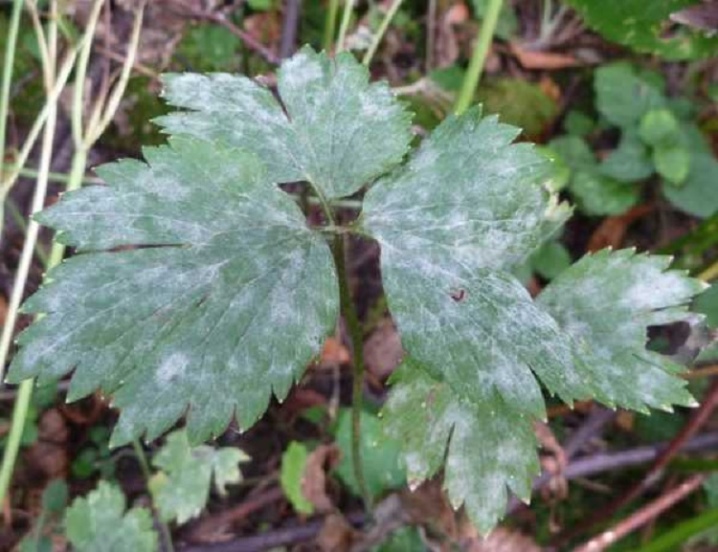
Also, this plant is often attacked by annoying cabbage butterflies eating foliage, and various caterpillars. You can get rid of insects by using special insecticides or herbal infusions using laundry soap or ash. Sometimes the buttercup can get sick with the so-called rust, in which holes can form on the leaves that crack over time.
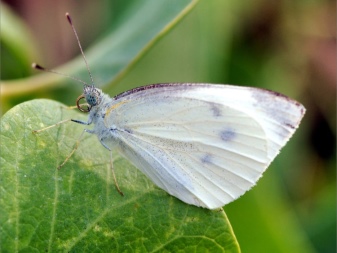

Creeping buttercup can also infect nematodes, which are miniature worms that are a great danger to any plant. They appear only with an excessive amount of moisture. Plants that are actively attacked by worms die very quickly. For the destruction of worms, special preparations are also used, introduced into the soil.It can be concluded that all diseases of buttercup are mainly associated with an abundance of moisture or excessive drought.

Use in landscape design
The creeping buttercup is extremely rarely used in landscape design, as it grows very quickly in the garden, covering other plants with itself. Nevertheless, this plant looks great both on clubs and on alpine slides, as well as next to artificial reservoirs. Most often, the creeping buttercup is planted singly or in combination with other garden buttercups. With this combination of plants, you can very advantageously transform any garden plot.
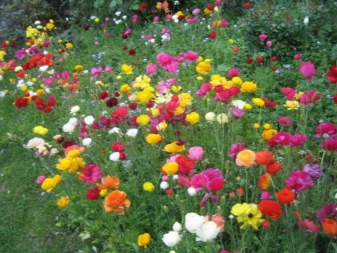

Buttercups also get along well with many other garden plants, they look especially advantageous with bells and next to tulips. If it is important that the buttercup does not grow over the entire area, then it can be planted in a regular pot. In general, we can say that when planting a creeping buttercup, you just need to turn on your imagination and not be afraid to show any creativity.
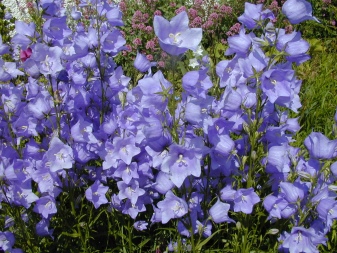
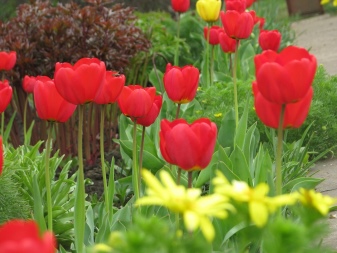
How to get rid of buttercup weed?
It is known that with good soil, the creeping buttercup multiplies quickly and fills all the free space, becoming a weed. Many people start this plant, not realizing how much it can "harm" the garden or vegetable garden. If the buttercup has covered a flower or vegetable crop, then it should first be cut off and then completely weeded out using garden tools.
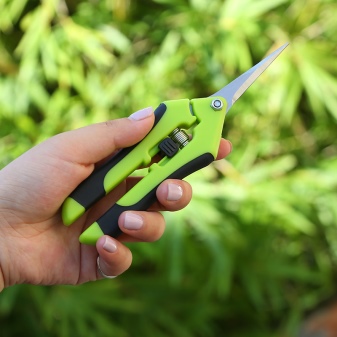
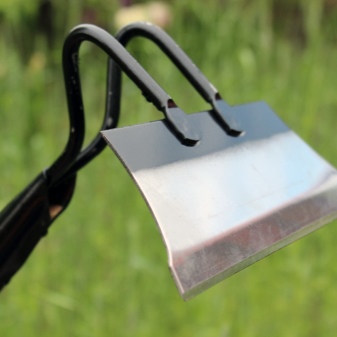
Also, to remove this plant from the garden, you can use special products containing so-called herbicides. Therefore, before planting a buttercup, you should think about the fact that at the summer cottage there may be not only a bright yellow lawn of buttercups, but also an annoying weed that will be difficult to remove.

See below for more details.







































































































The comment was sent successfully.